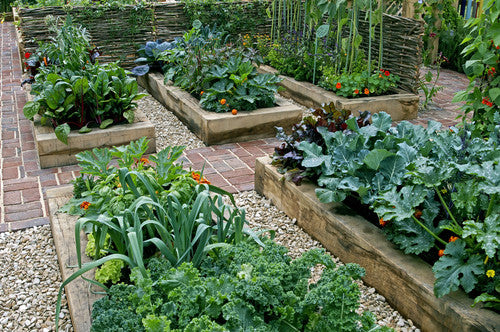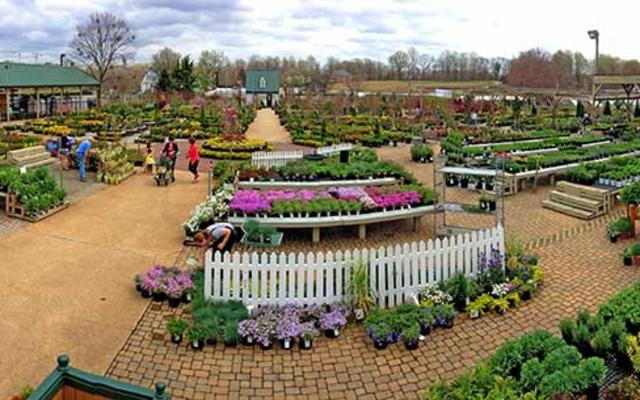Learn Exactly How to Grow a Prospering Gardening Atmosphere for All Ability Degrees
Creating a growing garden is a diverse endeavor that can be welcomed by individuals at any kind of ability degree. By taking a look at essential parts such as dirt health and wellness, proper plant choice, and seasonal treatment routines, one can create a lasting horticulture practice that produces gratifying results. Recognizing just how to analyze and improve your yard space lays the foundation for success. The complexities of applying these concepts often existing difficulties that can prevent even the most passionate amateur. What approaches can be employed to get rid of these challenges and promote a really growing environment?
Understanding Your Garden Space
In the world of horticulture, understanding your yard space is extremely important to cultivating a thriving landscape (Homestead Gardening). The very first action in this undertaking entails evaluating the certain characteristics of your plot. Aspects such as dirt structure, sunshine exposure, and water drainage play essential roles in establishing the suitability of your garden for various types of plants
Begin by conducting a dirt test to examine pH degrees and nutrition content, which will certainly inform any kind of essential amendments. In addition, observe exactly how much sunshine your space obtains throughout the day. Different plants have varying light requirements; some prosper completely sunlight, while others favor complete or partial color.

Finally, review the available space and strategy appropriately. This consists of considering plant heights and infected make certain adequate area for growth without congestion. By acquiring a thorough understanding of your garden area, you set the foundation for an effective gardening experience.
Picking the Right Plant Kingdoms
Selecting the right plants for your garden needs careful factor to consider of different aspects, including climate, soil problems, and individual choices. Start by assessing your neighborhood environment, as certain plants thrive specifically temperature level ranges and weather patterns. For example, tropical plants may not make it through in colder areas, while durable perennials can stand up to severe wintertimes.

Consider your personal preferences, including visual charm and upkeep degrees. Make a decision whether you like dynamic blossoms, rich foliage, or edible crops. Additionally, consider the moment and effort you are eager to invest in plant care, as some selections demand even more attention than others.
Last but not least, think of the garden's design and light direct exposure. Sunshine patterns throughout the day will influence your selections-- some plants require full sunlight, while others grow in shade. By attentively analyzing these components, you can produce a efficient and harmonious yard tailored to your environment and preferences.
Important Gardening Devices
A well-equipped gardener can substantially boost their horticulture experience and end results. Essential gardening tools are fundamental to cultivating a successful garden, regardless of skill level. Initially, a tough spade is invaluable for excavating and transforming dirt, while a trowel enables specific growing and hair transplanting of smaller sized plants.
Trimming shears are important for preserving plant health by removing dead or overgrown branches, promoting far better air blood circulation and development. Furthermore, a hand rake serves for removing debris and freshening the soil, making certain ideal conditions for plant origins.
Gardening handwear covers safeguard hands from thorns, blisters, and chemicals, making them an essential device. A watering can or pipe with an adjustable nozzle ensures that plants obtain sufficient moisture without overwatering.
Last but not least, consider buying a durable wheelbarrow for transferring dirt, plants, and tools around the yard effectively. By assembling a top quality toolkit that includes these essential things, gardeners can take on different tasks with self-confidence and ease, leading the way for a growing gardening setting. Remember, the right tools not just enhance performance however additionally enhance the total enjoyment of the horticulture procedure.
Soil Prep Work and Maintenance
Quality dirt is the structure of a successful yard, making correct prep work and maintenance important for healthy plant development. Based on the examination results, amendments can be made to enhance soil problems for details plant needs.
Incorporating organic matter, such as garden compost or well-rotted manure, is essential for improving soil structure read what he said and fertility. This not only improves nutrition accessibility yet additionally promotes beneficial microbial activity. Additionally, proper drainage is important; hefty clay dirts might call for the enhancement of sand or perlite to enhance oygenation.
Routine maintenance of soil health includes mulching, which conserves moisture and suppresses weeds. Moreover, rotating crops annually aids prevent nutrient deficiency and lowers parasite and condition dangers. It is also important to avoid over-tilling, which can interrupt soil framework and injury helpful microorganisms.
Eventually, a consistent dedication to soil prep work and upkeep will lead to a prospering yard, guaranteeing that plants receive the essential nutrients they need for durable growth and productivity.
Seasonal Treatment and Administration

In spring, concentrate on growing new seeds and plants, while also performing soil examinations to change nutrient shortages. Consistently inspect for diseases and bugs, as these can proliferate with the warming weather condition. Summer needs consistent watering and mulching to maintain moisture, together with trimming for much better air blood circulation.
As autumn strategies, it's time to prepare the garden for inactivity. This consists of gathering plants, tidying up debris, and using a layer of mulch to secure plant origins from frost. Think about growing cover plants to enrich the dirt during the wintertime months.
Finally, winter months care is vital. Inspect structures like greenhouses for damage and make sure proper insulation for delicate plants. Routinely keep an eye on for parasites that may seek sanctuary inside. By adjusting your gardening techniques to the seasonal cycles, you can foster a prospering environment that supports plant health year-round.
Conclusion
To conclude, growing an effective yard calls for a thorough understanding of essential principles such as soil composition, sunshine direct exposure, and appropriate plant selection. Implementing effective soil preparation and upkeep strategies, along with making use of the right devices, promotes an ideal growing environment. Regular seasonal care and monitoring practices even more improve plant health and productivity. By adhering to these fundamental standards, individuals whatsoever skill degrees can accomplish a growing garden that adds to both visual pleasure and environmental sustainability.
Choosing the right plants for your yard needs cautious factor to consider of various variables, including environment, soil problems, and personal choices. Conduct a dirt examination to determine pH degrees and nutrient material, which will certainly assist you in selecting plants that will certainly thrive in your yard.Finally, consider investing in a sturdy wheelbarrow for moving dirt, plants, and tools around the yard efficiently.Quality dirt is the foundation of a successful yard, making proper prep work and maintenance important for healthy plant development. Homestead Gardening.In final thought, growing a successful Full Article garden calls for an extensive understanding of crucial principles such as dirt composition, sunlight direct exposure, and proper plant choice